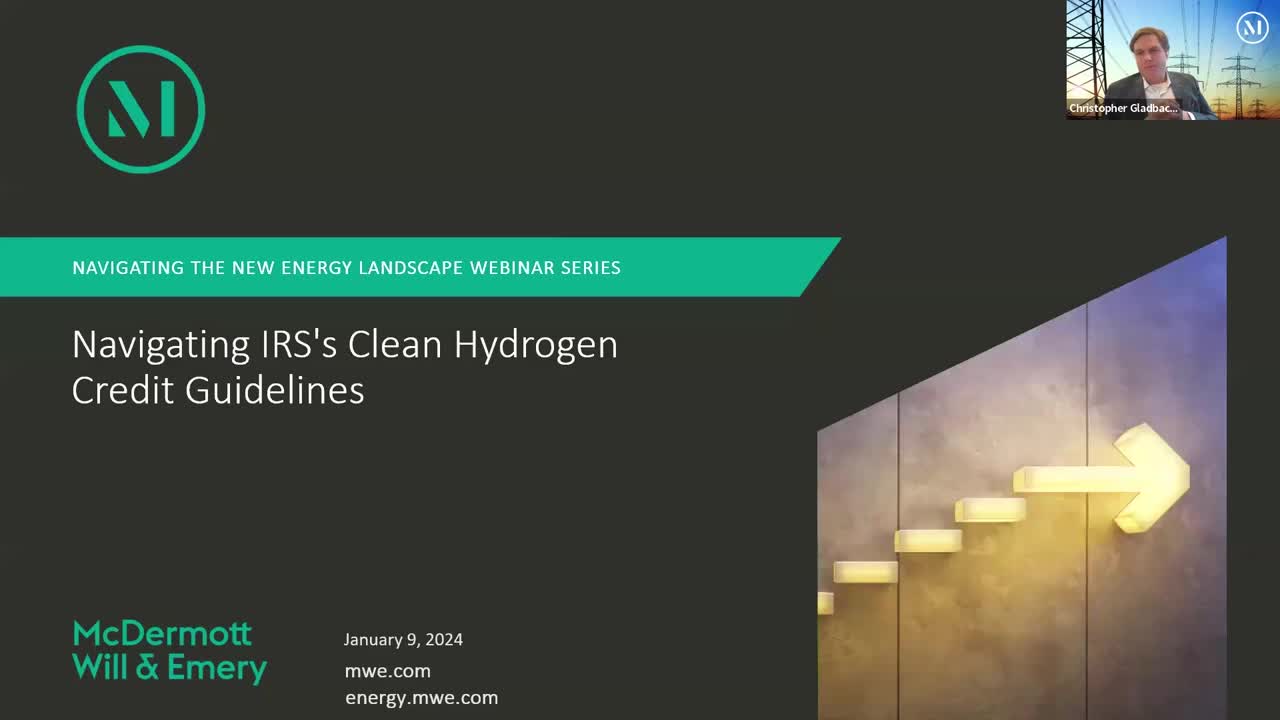Overview

During this webinar, Partners Heather Cooper and Christopher Gladbach discussed the Internal Revenue Service’s (IRS) recent guidance on the clean hydrogen production tax credit under Internal Revenue Code Section 45V. The guidance includes important rules that are of particular interest to hydrogen producers, developers and investors.
Top takeaways included:
- Enacted under the Inflation Reduction Act of 2022, Section 45V provides a tax credit for the production of qualified clean hydrogen. The IRS issued comprehensive guidance in the form of proposed regulations that intend to address fundamental questions surrounding Section 45V and generally takes a conservative interpretation of the statutory emissions requirements. Nevertheless, the guidance solicits many comments across several material areas that may provide more flexibility in the final regulations.
- The proposed regulations would provide that lifecycle greenhouse gas emissions be calculated in accordance with the most recent Greenhouse Gases, Regulated Emissions, and Energy Use in Transportation (GREET) model. This model only includes emissions associated with feedstock growth, gathering, extraction, processing and delivery to a hydrogen production facility. The GREET model would also include any other emissions associated with the hydrogen production process.
- Additionally, the proposed regulations would limit the feedstock electricity source in the hydrogen production process to be from new renewable or low-emissions sources, which would be enforced through “energy attribute certificates” (EACs). A qualifying EAC must meet the three-pronged “pillars” test, which includes incrementality, temporal matching and deliverability.
- Incrementality: Electricity generating facilities must be new, repowered or uprated with a commercial operations date that is within 36 months of the hydrogen production facility’s placed-in-service date. Open discussion surrounds the 36-month rule and the placed-in-service dates. The IRS is soliciting feedback on retirement/curtailment approaches for certain existing facilities, including nuclear facilities.
- Temporal Matching: Electricity input consumption must be matched to the hydrogen production output on an hourly basis. The implementation of this requirement, however, is under development with many unanswered questions. Annual matching is allowed as a transitional phase-in approach until 2028. Market participants must consider how to comply with the hourly matching requirements, especially where there is no relief for stored energy.
- Deliverability: The electricity from electricity generating facilities must be sourced in the same “region” as the hydrogen production facility. Market participants may encounter challenges with respect to this requirement in tandem with the other pillars, depending on the application of “region” and the use of EACs.
- Procedurally, the proposed regulations would impose significant recordkeeping requirements, including verification and attestation mandates that would involve tracking raw emissions data in accordance with either the GREET model or the provisional emissions rate petition, among other requirements. If adopted, we expect third-party consultants to fill the recordkeeping gap.